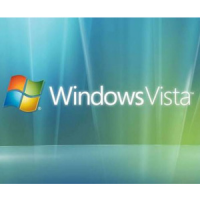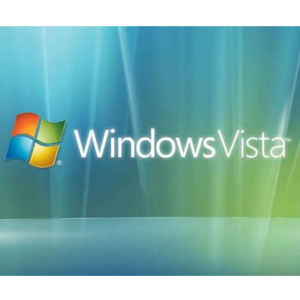

30 Windows Vista Tips & Tricks

Windows 7 is already out but still stuck with your old Windows Vista OS? No problem, use the following tips and tricks to bring back some life into your Windows Vista system.
1) Rename Administrator account
Right-click Computer and click Manage. Under Local Users and Groups, open Users, right-click the one named Administrator, and choose Rename. Then right-click it and choose Properties to delete its telltale description as well.
2) Improve Your Network
 There are two types of wireless networks known to Vista: public and private. Public networks are less secure, so the OS disables discovery of other devices when connected to one. But by default, Vista makes your network public. Go private instead, enabling a much more comprehensive view of the network behind your router using a new protocol called Link Layer Topology Discovery. In the Network and Sharing Center, click Customize under the picture of your network at top. Switch to Private and click Next. While you’re optimizing things, note the various sharing options listed; it’s easy to give all of your PCs access to your printer here.
There are two types of wireless networks known to Vista: public and private. Public networks are less secure, so the OS disables discovery of other devices when connected to one. But by default, Vista makes your network public. Go private instead, enabling a much more comprehensive view of the network behind your router using a new protocol called Link Layer Topology Discovery. In the Network and Sharing Center, click Customize under the picture of your network at top. Switch to Private and click Next. While you’re optimizing things, note the various sharing options listed; it’s easy to give all of your PCs access to your printer here.
3) Truly Secure Your Files
Password-protecting your laptop is good overall security, but for added protection, start encrypting. Vista Enterprise and Ultimate editions come with BitLocker Drive Encryption, a tool that relies on a Trusted Platform Module to secure access—check your manual to see if your notebook has one and update your BIOS if needed. To make the magic happen, you’ll need an extra partition on your hard drive that you can create with the Vista partitioning tool on your installation disc or with the BitLocker Drive Preparation Tool, a Vista Ultimate Extra. You’ll create one small partition for essential OS files, and the rest of the drive will hold encrypted files. Format the partition as NTFS, not FAT32.
4) Beautify Your Boot
The boot screen built into Windows is functionally useless. Why not make it look prettier? Microsoft designed a built-in boot screen that replaces the animated start-up bar (you’ll see it if you awaken your PC from hibernation); it provides just as little information, but it looks a whole lot better. To enable it, run MSConfig from the Start menu, and under the Boot tab, select No GUI Boot.
5) Be a Mobile Power User
Windows Mobile devices are handy, but are crippled off the bat. The new operating system comes with a Sync Center that lets you sync only media files, not your PIM info. Before plugging your device in for the first time, go to the Download Center at Microsoft.com and search the Mobile Devices category for the Windows Mobile Device Center, which powers up support for syncing e-mail, calendar data, and contact info. Once you’ve used the Device Center to transfer your calendar to your handheld, right-click it in My Computer to see the gadget’s charge state, and you’ll always be fully powered.
6) Be The Boss
In order to limit the havoc that rogue programs can cause, administrator accounts aren’t totally in charge. To gain complete control (to install antispyware, for example), log on as the Administrator—but not all the time, or you’ll negate this account’s raison d’être. The Administrator account won’t show up in the User Accounts control panel, however: It’s disabled by default. In Vista Ultimate or Business editions, right-click it in the Management Console (as described in the first tip) and select Properties. Uncheck Account is disabled and it’ll show up in the control panel. That’s the super-mega-ultimate account. Don’t have Ultimate? Click Start, type cmd, right-click the cmd.exe item at top, and choose Run as administrator. Type net user administrator /active:yes and log off. The Administrator account now shows up on the welcome screen.
7) Extend Activation
Are you testing out Vista’s features and compatibility but not sure if you want to go ahead and activate it? Microsoft understands. It has built a software licensing manager into the new OS that lets you extend the activation period. At the Start menu’s search bar, simply type slmgr -rearm to get another 30 days. You can do this a maximum of three times before Microsoft blocks further extension periods. And once you’re locked out, that’s it.
8) Prevent Vertigo on Vista
The new 3D desktop is a tremendous improvement, but not all of the features are handy, and some of the settings are downright disconcerting. Control your own 3D experience! First, right-click Computer and choose Properties to get the System Properties page. Click Advanced system settings. On the Advanced tab, click Settings in the Performance section. The Visual Effects field is where you can choose to Adjust for best appearance, Adjust for best performance, Let Windows choose, or go wild with your own choices.
9) Snip at Will
Power users are comfortable using the PrintScr key to capture screen shots, but there’s a better way in Vista. You can use the integrated Snipping Tool to capture any object on your screen and then annotate, save, or share the image. Simply use the mouse to capture free-form shapes, rectangles, whole windows, or full screens. After you capture a snip, it’s automatically copied to the markup window, where you can annotate, save, or share it. Bonus: If you’ve clipped from an Internet Explorer window (not Firefox or Opera) and save the snip as an HTML file, the URL is automatically appended to your image.
10) Pick Your Feeds
The Sidebar’s RSS Feed Reader is handy, but by default it picks up feeds only directly from Microsoft. Making it work for you is a two-stage process. First, find a Web page with an RSS feed on it using Internet Explorer—the orange feed icon at the right of the status bar lights up to indicate the feed’s presence. Click it, and select Subscribe to this feed. Then right-click on the module and select Options; you’ll be able to choose which feeds and how many items are displayed.
11) Be a Better Parent
Kids need structure, otherwise they’ll spend hours browsing the Web for dirty limericks. Turn to Vista’s parental controls for a quick and easy way to monitor how long they’re online—and who goes where. First, create an account for each child in the User Accounts control panel. Then click Set Up Parental Controls to create and set limits. Don’t forget to enable activity monitoring as well. It’s okay—you’re Dad, not Big Brother. You can view them later by visiting the same section of the control panel. But be forewarned: Parental controls are available only to PCs on a workgroup, not those on a domain.
12) Reduce Power Consumption
As laptops became more popular, consumers became aware of Win XP’s power settings. Standby left your computer running at low power; hibernate saved all memory to disk and then shut down your system—but often balked at problem programs. With Vista, Microsoft redrew the rules, adding an “away mode” and defaulting to “sleep” rather than off. Sleep mode starts off like standby but saves memory like hibernate. Then after 15 minutes it just shuts off, with no back talk from programs. Nicely done, Microsoft! To shut down completely, skip the Start menu’s orange power button in favor of the right arrow next to it.
13) Get help
Though it appears similar to Win XP’s, Vista’s Support Center is much improved. Besides the usual documentation on core OS functionality, Vista’s integrated system can get the latest help info from the Web, allow a friend to help by remote assistance, or search in “Windows communities.” Type a word or phrase into the main search field and hit enter. At the bottom of your returned results is a useful link to these other sources of assistance.
14) Launch Apps Faster
When you place items in the Quick Launch bar (the little icon bar next to the Start button), Windows Vista automatically assigns shortcut key combinations to them—well, it assigns keys to the first ten, anyway. Just hit the Windows key plus a number key corresponding to the icon’s position in the bar. For instance, to launch the third application in the Quick Launch bar, press Windows-3. Don’t see the bar? Right-click an empty part of the Taskbar and select it under the Toolbars menu.
15) Restore Your Menus
Vista’s own windows and many new applications lack the familiar File, Edit, and View menus. But we’ve gotten used to them after all these years! You can enable them through each application—if they’re included at all. To turn them on in Vista proper, open any window (such as Computer, or Documents), click Organize, and click Folder and Search Options. Select the View tab and fill in the check box next to Always Show Menus. Click Apply and then OK. Alternatively, to show the menus temporarily, just hit the Alt key with any given window in the foreground.
16) Eliminate That Warning
Windows Vista hates it when you don’t use an antivirus program, a firewall, or some other security feature. But if you don’t need one part of the built-in security, you also don’t need the Security Center shield icon to pop up constantly in the system tray. Right-click the icon and click Open Security Center. Then, in Security Center, click Change the Way Security Center Alerts Me. You want to select Don’t Notify Me and Don’t Display the Icon (even though Windows tells you it’s “Not Recommended”).
17) Add Photos Faster
Most digital cameras come with proprietary software for importing pictures into Windows and cleaning off the camera’s memory card, generally a two-stage process. You can do it all in one step with Windows Photo Gallery, which has an auto-erase feature. It lets you dump photos and erase your camera’s memory card with one click, preserving a bit of battery life and simplifying yours. Select Options from the File menu, and under the Import tab, select Always erase from camera after importing. Good? Maybe. Potentially dangerous? Definitely. Proceed with caution.
18) Get The Power Prompt
The Command Prompt, though buried in the Start menu, is an enduringly versatile application. Too bad it’s hampered by User Account Control, which will prevent certain apps from running properly because of a lack of permissions. To upgrade its capabilities, navigate to the Accessories folder in the Start menu, right-click on Command Prompt, and select Run as Administrator. If you find yourself doing this frequently, try this shortcut: The search box in Vista’s Start menu can serve the same function. Simply enter a command, hold the Shift and Ctrl keys, and press Enter.
19) Be An Icon Artist
You may have noticed that by simply holding down the Ctrl key you can use your mouse’s scroll wheel to resize a folder’s icon. But you may not have noticed that this works on the desktop itself. You can resize from standard 48-by-48-pixel icons
to full 256-by-256 photo quality renditions. Power users: Go to Computer and click the arrow to the right of the View menu, where you’ll find a slider with an endless selection of icon sizes.
20) Know Your Velocity
Everyone knows about the Windows Experience score, but a power user won’t find the information there as comprehensive or useful as one could wish. Skip it in favor of Microsoft’s Management Console. Right-click on Computer and select Manage. Then select Reliability and Performance and take a look at your system’s Reliability Monitor in the collection of monitoring tools. This system stability index gives a weighted value of how stable your PC is based on data collected over its lifetime. Little red X’s show where specific failures occurred. It’s a great troubleshooting tool.
21) Create an XPS Document
XPS (which stands for XML Paper Specification) can be very useful; it’s effectively an open-standard version of the popular -but proprietary Adobe Acrobat format. What does it all mean? You can create, edit, print, and save the documents without paying Adobe for a license. To create an XPS document, create a file in any word processor (Notepad, WordPad, Word, and so on) and click Print . . . . Then select the automatically installed XPS Printer to “print” the document to an XPS file.
22) Sync Everything!
Need to sync to something that’s not supported? Say, to a digital camera, across folders, or even between different computers? SyncToy 1.4, a PowerToy from Microsoft, now supports Windows Vista and will let you sync a folder to a removable hard drive, a network share, and other things. You can pick up the tool for free from Microsoft’s Download Center.
23) Set Affinity
Multitasking is an efficient way to spread resources across multiple CPUs—or the multiple cores of a dual-core CPU (or quad-, or octo-, or whatever!). But if you have a single application that consumes a large amount of the system’s resources, such as Norton AntiVirus, bypass the multitasking and set it to run exclusively off a single core, potentially improving its efficiency. Bring up the Task Manager, find the resource-hogging process (for Norton, it’s called nprotect.exe), right-click it, and select Set Affinity. Then deselect one of the cores, isolating the process and boosting its efficiency.
24) Move Your Stuff
Personal folders are handy, but they may not live where you want them to. Fortunately, you can relocate your own folders fairly easily. Click your username at the top right of the Start menu to open your profile. Right-click Documents and choose Properties. Then click Location | Move and select the new location, or even create it at this time. You’ll be asked if you want to move your documents; hit Yes, of course. Don’t try this with the Public folder, though: There’s a Location tab, but no Move button.
25) Know your Autoplay
XP’s Autoplay functionality was merely a thing the OS did, but Vista makes it useful with a control panel applet (including Blu-ray and HD DVD support!). Type Programs in the Start menu and hit Enter and you’ve got complete control.
26) Go International
Need to know the time in Taiwan? Or Shanghai? Searching for time zones in the control panel will reveal an option to add clocks for different time zones.
27) Gain Speed
Does Vista seem slower than XP to you? A default power setting in the “Power Saver” plan limits the CPU to 50 percent. Open the Power Options control panel and change it to “High Performance” to give it full throttle.
28) Launch Apps Faster
Want to find that program? Don’t search through all those menus on the Start button, just type the first couple of characters into the bar at the bottom and the name will appear.
29) Take a Meeting
Vista has a calendar that lets you share your schedule with others online. Type Calendar into the Start menu to launch it. Add a few appointments and click the Share menu and you’re off!
30) Get a Digital Keyboard
Windows Vista comes with a virtual keyboard, handy if your real one breaks. Simply punch OSK into the Start menu’s Search field and hit enter to bring up the on-screen keyboard and use your mouse to “key” in data.
 Leave a Reply
Leave a Reply 


All Rights Reserved • Powered by juzzhost | Founded by Delson Moo



